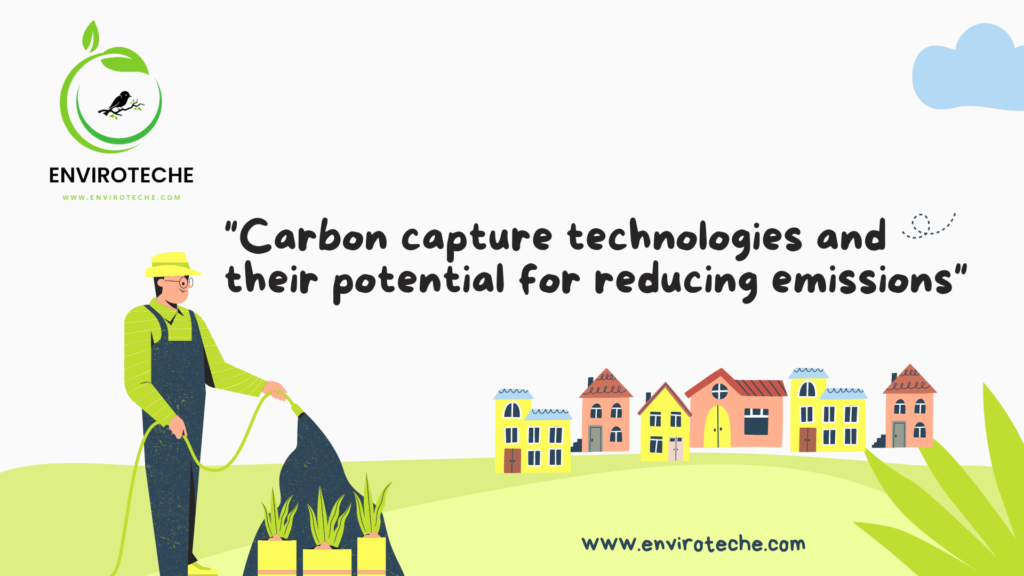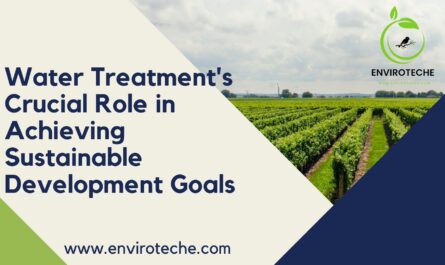
Irfan Haidri1, Muhammad Qasim1
1Department of Environmental Sciences, Government College University Faisalabad
Abstract
Technologies for capturing carbon have come to light as a viable remedy for the issue of emissions of greenhouse gases. These technologies seek to safely absorb and store carbon dioxide from industrial operations, keeping it from escaping and causing global warming. We will examine various methods for capturing carbon and their capacity to cut emissions in this blog.
In this blog we discussed impacts of carbon on climate, its utilization, cycle, direct capture and utilization in order to overcome the problem of air pollution.
Introduction
The constant pursuit of economic expansion is accelerating climate change, depleting natural resources, and harming air quality. New goals to lessen our impact on the environment have been set as a result of the finally serious consideration given to these consequences (Usman et al., 2022). Our relentless pursuit of economic expansion is causing the depletion of natural resources, the degradation of air quality, and the acceleration of climate change. Utilizing carbon capture and storage (CCS) is one potential way to lower carbon dioxide outputs from industrial emitters. One of the different CO2 separation (Font-Palma et al., 2021).
Technologies for low-temperature CO2 capture, also known as cryogenic carbon capture, rely on phase changes to convert CO2 from a gas to a liquid or solid. Although the term “cryogenics” is sometimes used to suggest low temperature separation, the definition of the word more precisely relates to processes that take place at temperatures below 120 K, such as the condensation of nitrogen and oxygen(Poole et al., 2023). In order to transition the current European energy system to a low carbon energy system with reduced greenhouse gas (GHG) emissions, increased energy efficiency, and a higher share of renewable energy sources (RES), the European Union (EU) has set specific goals for 2030 and 2050.
Electricity to hydrogen, electricity to substitute natural gas (SNG), power to methanol, and many other adaptations that route their end products to the chemical market or the global transportation sector are examples of electric to chemicals energy storage systems or power to fuel technology. By needing at least one carbon and one hydrogen molecule per fuel or chemical, energy storage and carbon capture and utilization (CCU) are both made possible (Sterner & Specht, 2021).
CO2 utilization and the carbon cycle
The amount of carbon dioxide that is extracted or stored and the amount of carbon dioxide that is used by a pathway are not always equal. Once indirect and other consequences are taken into account, using CO2 does not always result in a reduction in emissions or a positive impact on the climate(Zheng et al., 2020). The manufacture of plastics and other items results in a need for “socioeconomic” resources that may be partially satisfied by CO2 usage. The industrial collection of flue gases after the extraction and combustion of fossil fuels could be used to produce goods from concentrated CO2 (Rasheed et al., 2021).
To attain net zero emissions over the long term, the CO2 loop will need to be closed, which means CO2 will need to be sourced from the atmosphere, possibly through direct air collection or through uptake on land through photosynthesis or mineralization (Höhne et al., 2021). To change the existing carbon flows from a lithosphere-to-atmosphere cycle to an atmosphere-to-atmosphere cycle, for example, net zero CO2-based fuels are required (Hepburn et al., 2019).
Direct air capture (DAC)
A method known as direct air capture (DAC) uses the air to take carbon dioxide directly out of it. The carbon cycle is closed by the removal of oxygen from the atmosphere using a variety of systems, including absorption, adsorption, ion-exchange resin, mineral carbonation, membrane, photocatalysis, cryogenic separation, electrochemical, and electro dialysis methods (Ramalingam et al., 2022).
Thermodynamic problems with the separation of CO2 from the air, which are more substantial than those with the separation of CO2 from flue gas, are what define direct air capture methods (Zhao et al., 2019). The two systems that have undergone the most extensive research and development among the major businesses that have developed in this field are absorption, which makes use of an aqueous solution of a strong base, and adsorption, which is primarily based on chemisorbents with amine-functionalized sorbents (Natarajan et al., 2018).
Only one of these, the Clime, is the first commercial plant to be running. It is important to note that not all methods have reached the TRL at industrial scale, and that prices and energy consumption are higher than those needed for CO2 extraction from flue gas. Due to the fact that this is a brand-new, emerging technology, a wide range of cost and energy consumption values have also been proposed (Akinoglu et al., 2021).
Carbon capture and utilization (CCU)
In order to prevent extreme and pervasive events like heat waves, wildfires, floods, droughts, and cyclones that threaten the entire ecosystem and impede global social and economic development, it is imperative to limit the impact of climate change (Bell et al., 2018). Several currently available carbon capture and separation methods can be utilized to capture the CO2 needed from various sources, such as power plants and industrial operations, to guarantee a pure and secure CO2 supply. The fundamental division of CCU processes is into five broad categories: biological conversion, mineral carbonation, increased oil recovery, CO2 conversion to chemicals and fuels, and direct CO2 usage (Ghiat & Al-Ansari, 2021).
To achieve the ambitious global warming goal, adaption and mitigation measures call for a 40%–70% reduction in GHG emissions from 2010 levels by 2050 and neutral to negative emissions by the end of the century (de Andrade Correa & Voigt, 2021). In order to facilitate the execution of these measures and give climatic projections to the end of the twenty-first century, a number of adaptation and mitigation scenarios have been developed (Brandi et al., 2021).
Conclusion
Technologies for capturing carbon have the potential to drastically cut emissions and assist in reducing the consequences of climate change. Although there are still some obstacles to be addressed, such as the price of these innovations and the energy needed to deploy them, the benefits they could provide make them worthwhile. We can build a future that is more environmentally friendly and open up opportunities for new companies by combining these technologies. Governments, corporations, and individuals must collaborate in order to put these innovations into use and have positive effects on our planet.
References
Akinoglu, B. G., Tuncel, B., & Badescu, V. (2021). Beyond 3rd generation solar cells and the full spectrum project. Recent advances and new emerging solar cells. Sustainable Energy Technologies and Assessments, 46, 101287.
Bell, J. E., Brown, C. L., Conlon, K., Herring, S., Kunkel, K. E., Lawrimore, J., Luber, G., Schreck, C., Smith, A., & Uejio, C. (2018). Changes in extreme events and the potential impacts on human health. Journal of the Air & Waste Management Association, 68(4), 265–287.
Brandi, A., Broadbent, A. M., Krayenhoff, E. S., & Georgescu, M. (2021). Influence of projected climate change, urban development and heat adaptation strategies on end of twenty-first century urban boundary layers across the Conterminous US. Climate Dynamics, 57, 757–773.
de Andrade Correa, F., & Voigt, C. (2021). The Paris Agreement and Net-Zero Emissions: What Role for the Land-Sector? CCLR, 1.
Font-Palma, C., Cann, D., & Udemu, C. (2021). Review of cryogenic carbon capture innovations and their potential applications. C, 7(3), 58.
Ghiat, I., & Al-Ansari, T. (2021). A review of carbon capture and utilisation as a CO2 abatement opportunity within the EWF nexus. Journal of CO2 Utilization, 45, 101432.
Hepburn, C., Adlen, E., Beddington, J., Carter, E. A., Fuss, S., Mac Dowell, N., Minx, J. C., Smith, P., & Williams, C. K. (2019). The technological and economic prospects for CO2 utilization and removal. Nature, 575(7781), 87–97.
Höhne, N., Gidden, M. J., den Elzen, M., Hans, F., Fyson, C., Geiges, A., Jeffery, M. L., Gonzales-Zuñiga, S., Mooldijk, S., & Hare, W. (2021). Wave of net zero emission targets opens window to meeting the Paris Agreement. Nature Climate Change, 11(10), 820–822.
Natarajan, S., Bajaj, H. C., & Tayade, R. J. (2018). Recent advances based on the synergetic effect of adsorption for removal of dyes from waste water using photocatalytic process. Journal of Environmental Sciences (China), 65, 201–222. https://doi.org/10.1016/j.jes.2017.03.011
Poole, T., Foster, T., & Matthews, A. J. (2023). Gas-gap heat switches with negative room temperature conductor separation and their application to ultra-low temperature platforms. Cryogenics, 103632.
Ramalingam, G., Pachaiappan, R., Kumar, P. S., Dharani, S., Rajendran, S., Vo, D.-V. N., & Hoang, T. K. A. (2022). Hybrid metal organic frameworks as an Exotic material for the photocatalytic degradation of pollutants present in wastewater: a review. Chemosphere, 288, 132448.
Rasheed, T., Anwar, M. T., Ahmad, N., Sher, F., Khan, S. U.-D., Ahmad, A., Khan, R., & Wazeer, I. (2021). Valorisation and emerging perspective of biomass based waste-to-energy technologies and their socio-environmental impact: A review. Journal of Environmental Management, 287, 112257.
Sterner, M., & Specht, M. (2021). Power-to-gas and power-to-X—The history and results of developing a new storage concept. Energies, 14(20), 6594.
Usman, M., Jahanger, A., Makhdum, M. S. A., Balsalobre-Lorente, D., & Bashir, A. (2022). How do financial development, energy consumption, natural resources, and globalization affect Arctic countries’ economic growth and environmental quality? An advanced panel data simulation. Energy, 241, 122515.
Zhao, R., Liu, L., Zhao, L., Deng, S., Li, S., Zhang, Y., & Li, H. (2019). Thermodynamic exploration of temperature vacuum swing adsorption for direct air capture of carbon dioxide in buildings. Energy Conversion and Management, 183, 418–426.
Zheng, J., Chong, Z. R., Qureshi, M. F., & Linga, P. (2020). Carbon dioxide sequestration via gas hydrates: A potential pathway toward decarbonization. Energy & Fuels, 34(9), 10529–10546.
Check Other Schlorships:
